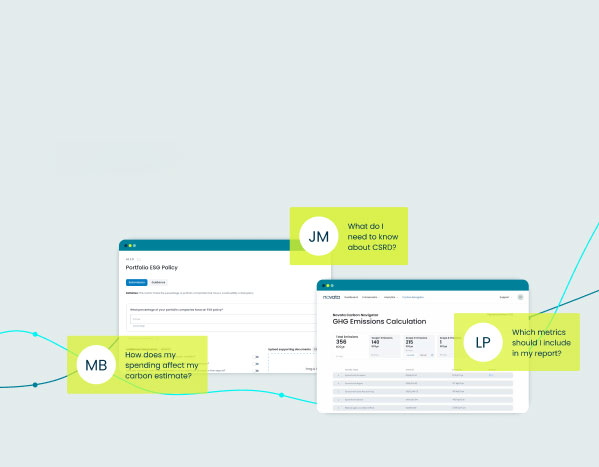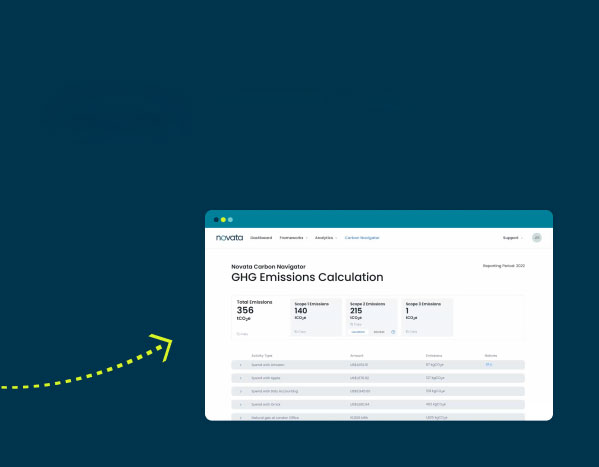This article is the third in a three-part series on addressing biodiversity loss. Read the first two articles here:
- Why Biodiversity Loss Demands a Seat at the Table
- Target 15 of the Global Biodiversity Framework: Key Takeaways for the Private Sector
The adoption of the Global Biodiversity Framework (GBF) at COP15 marked a significant development in multilateral efforts to protect, restore, and sustainably manage nature. The natural and economic impacts of biodiversity loss are far-reaching, making it a global imperative to address. Government signatories are expected to update their National Biodiversity Strategies and Action Plans (NBSAPs), ensuring that current strategies conserve and sustainably use resources dependent on biological diversity and reflect the specific measures set out under the Convention. As a result, we expect to see elevated standards and expectations for nature-related disclosure across the private sector.
One area driving private sector action is Target 15 of the GBF, which defines the role of businesses and financial institutions in halting and reversing nature loss. Companies must reduce harmful practices and increase positive action to align with the GBF’s mission to live in harmony with nature by 2050. To support these efforts, global standards and frameworks are developing or expanding guidance for assessing, disclosing, and reporting on nature-related risks, impacts, and dependencies.
Leading players in the space, including the International Sustainability Standards Board (ISSB), the Taskforce on Nature-related Financial Disclosure (TNFD), and the Global Reporting Initiative (GRI), have spearheaded the initiative to build clear, consistent, and replicable standards and frameworks. Below is a closer look at these frameworks, which have been either built or are under revision following the requirements of the GBF. Each is expected for official release by the end of the year.
Standards and Frameworks
The International Sustainability Standards Board
The ISSB is a standards-setting organization working to develop the global baseline of sustainability disclosures for capital markets. The Climate-related Disclosure Standard, which the ISSB is expected to release at the end of this year, requires businesses to provide material information about climate-related risks and opportunities. COP15 highlighted the intersection of climate and nature, with an emphasis on the relevance of biodiversity loss. Following the outcomes of COP15 and recognizing the need to address the significance of biodiversity, the ISSB underwent additional deliberation and review of the Standard to ensure nature-related material is effectively integrated with either the current Standard or future complementary work. The ISSB has considered the work done by the Taskforce for Nature-related Financial Disclosure (TNFD) and looks to leverage them as a thought partner and build on their climate and biodiversity disclosure research. Specific complementary enhancements are expected to include the corporate impacts on biodiversity, deforestation, and water.
The Taskforce on Nature-related Financial Disclosures
The TNFD’s mission is to build a framework for organizations to report and act on evolving nature-related risks, and to redistribute the global financial flows toward nature-positive outcomes and away from nature-negative initiatives. To date, TNFD has released four beta versions of its framework and intends to publish the finalized version in September 2023. The TNFD was a major contributor to the development of the Global Biodiversity Framework, and the release of its final framework will enable private companies to align with and act on the requirements under Target 15. Companies will be able to address their impacts and dependencies on biodiversity, act on nature loss, and support the resilience of businesses and financial portfolios to nature-related risks.
The Global Reporting Initiative
The GRI has supported corporate disclosure on biodiversity since 2016 under GRI 304: Biodiversity. In recognition of both environmental and regulatory changes, including those outlined under Target 15, the GRI has begun updating and realigning its Biodiversity standard with global best practices for transparency on biodiversity impacts. Proposed requirements include disclosure on supply chain impacts, the drivers of biodiversity loss (climate change, pollution, and overexploitation of resources), the human rights impact of biodiversity-related issues, and greater transparency around location-specific data. The revised standard initially underwent a public comment period and is now under review before its release in Q4 of this year. The publication of this standard will contribute significantly to the global baseline for biodiversity and nature-related disclosure reporting, and encourage framework convergence.
These nature-related frameworks and standards are complementary and designed to be used together. Once the frameworks are finalized, private markets will have specific, actionable, and reliable guidelines to use when reporting. The guidance will enable companies to effectively report on how they manage nature-related risks and opportunities, how they intend to achieve performance targets, what progress has been made toward those targets, and how resilient their business models and strategies are to nature-related risks.
Interim Action
While businesses prepare for these standards and frameworks, they can still begin to take action by assessing their impacts and dependencies on biodiversity using available toolkits and guidance.
The TNFD offers businesses guidance for understanding and acting on their nature-related risks and opportunities. Referred to as the LEAP approach (Locate, Evaluate, Assess, and Prepare), the TNFD developed a cohesive assessment process for nature-related risk and opportunity management. Using the LEAP approach will start companies on the path to success, as it exists as a complementary structure to the imminent TNFD framework.
Additionally, the Science Based Target Network (SBTN), a network of international environmental nonprofit organizations, provides initial, high-level guidance to businesses looking to get started on their nature-related target-setting journey. Its framework supports companies in understanding what is material to them and how to concentrate efforts so that both nature and business can prosper. The associated frameworks and standards expected for release will help make sure targets are not just set but acted on, and progress is made and disclosed.
Novata’s Role in Nature-Related Disclosure
Novata is at the forefront of sustainability reporting, making it easy for private market investors and reporting companies to collect, report on, analyze, and benchmark their ESG data. As such, we are taking the outcomes of the Global Biodiversity Conference seriously. As the updated standards are released from the ISSB, TNFD, and GRI, we will continue to assess and update our platform to provide the most relevant and up-to-date metrics aligned with globally recognized biodiversity standards.






